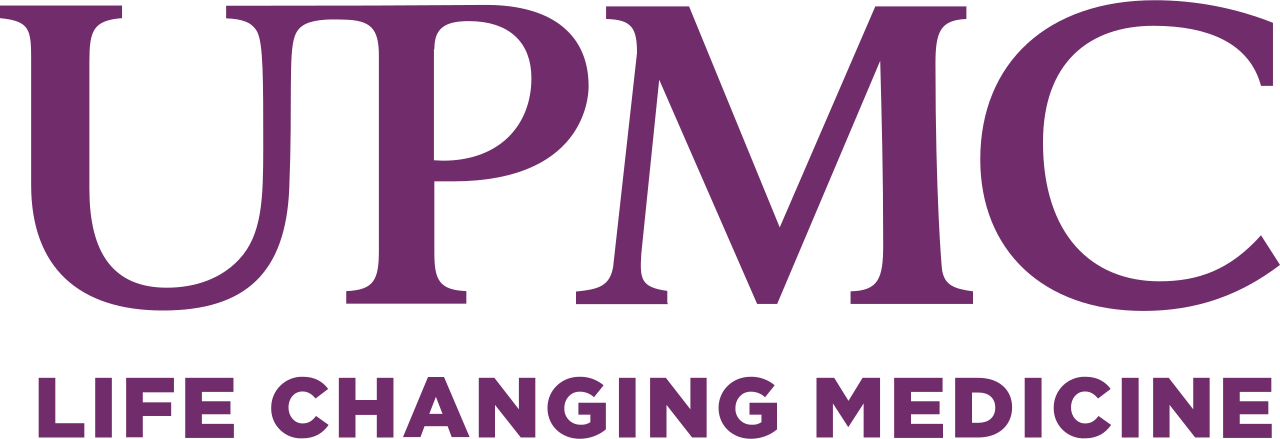
Only a Phone Call Away: The Development of a Transplant Telepharmacy Consult Service For a Large Medical System

Transplant patients must adhere to lifelong regimens and those caring for them must consider their regimen as the patients intersect with different parts of the health care system.
The need for a telepharmacy consult service
Based on statistics provided by the United Network for Organ Sharing (UNOS), UPMC Presbyterian completed 373 solid organ transplants in 2022 (data accessed 12/20/2022), comprised of 188 kidneys, 103 liver, 49 lung, 26 heart and 6 other transplants. The inpatient pharmacy at UPMC Presbyterian Hospital utilizes a service line model that is comprised of The University of Pittsburgh School of Pharmacy Clinical Faculty, clinical pharmacists, unit-based pharmacists, and service line pharmacists. Service lines are split into care areas, such as cardiology, trauma, and transplant pharmacy services.
Like nearly every health care system in the world, UPMC felt the immense pressure of the COVID-19 pandemic including, but not limited to, employee burnout and staffing shortages. The UPMC system was also forced to deal with a capacity management challenge while attempting to make sure the right patient was boarded into the right bed, which is a mission that was becoming increasingly more difficult.
Historically, the vast majority of patients who had undergone a solid organ transplantation were transferred to UPMC Presbyterian hospital for management, even for the admission diagnosis outside of the transplanted organ. Due to capacity management concerns, this practice was not able to continue in the COVID-era.
Medication regimen complexity is a well-known challenge in the solid organ transplant patient.While the utmost trust is placed in all providers practicing within UPMC, medication regimens and pharmacology can be quite intimidating for providers who do not routinely care for the transplant recipient.
Given multiple characteristics of a patient's medication regimen, including quantity of medications and interactions among them, pharmacists play a crucial role in the overall care of these patients. Transplant patients must adhere to these lifelong regimens and those caring for them must consider their regimen as the patients intersect with different parts of the health care system.
Leadership of the intensive care service line and capacity management of UPMC reached out to the clinical pharmacy leadership of UPMC Presbyterian to discuss potential solutions to the capacity challenges of care for solid organ transplant patients. Presbyterian’s Pharmacy Department houses the majority of the solid organ transplant clinical pharmacists across the system and our department began discussions with capacity management to devise a solution that allowed our team to assist those across the health system.
While both groups felt that daily, prospective monitoring of all solid organ transplant patients within the system was not a feasible solution, the clinical transplant pharmacists group was determined to create a pathway for all providers. Given the many pharmacological considerations that patients who present in the acute setting may experience, we saw an opportunity to enhance care by collaboration with providers who do not often care for this patient population through creating access to specially trained coordinating pharmacists to triage and address considerations directly with the requesting provider. The agreed upon solution was the development of a telepharmacy on-call clinical transplant pharmacy consult service to act as a drug information resource for all providers within our health system.
Building the service and engaging key stakeholders
Stakeholders all contributed to making this successful, including pharmacy administration who helped allocate time as to not interfere with other responsibilities. The goal was to integrate into current workflows instead of a separate standalone requiring additional resources. Below is a list of the identified stakeholders and their primary role in the process.
Key stakeholders included the following:
- Clinical pharmacy transplant specialist: The on-call team met to determine the level of additional workload required to implement the service and how to build a manageable coverage model. The team also was debriefed on the type of consults that were expected and coached to focus on drug information related recommendations as they were not following the patients on a daily basis.
- Pharmacy administration: The pharmacy administration team was engaged early in the process to review the potential time commitment of the specialists while ensuring that they remained within their scope of practice. The pharmacy administration team also assisted in organizing a representative of the service to present the service model to key pharmacy personnel at other UPMC hospitals prior to implementation.
- Executive administration and capacity management: Members of the UPMC executive leadership and capacity management team were actively engaged to ensure the service was able to be implemented in a UPMC systemwide manner with a focus on expediating the inception of the service. Executive leadership organized and coordinated efforts between the on-call pharmacists, marketing, and telephone/paging operators.
- UPMC corporate marketing: The marketing team developed materials that clearly depicted the workflow of the on-call service, a computer screen saver that was displayed on all computers within the system and an announcement for the landing page of the UPMC intranet.
- UPMC system telephone operators: The telephone operator services created a new pager number for the service with the ability to page directly to a member of the on-call team’s phone during business hours and generate an email that was sent to a shared email address for off-hours. Additionally, a system-wide page was sent to all UPMC physician providers announcing the service’s inception.
Meet the clinical transplant pharmacists
As Presbyterian Hospital performs nearly all types of adult solid organ transplants, we felt uniquely positioned to provide high-level pharmacology expertise to those consulting our service. To be a part of the consult service, we applied the following criteria to our transplant pharmacists: Specialized transplant pharmacotherapy training and/or >5 years of experience in direct patient care of solid organ transplant patients.
- On-call clinical transplant pharmacists by solid organ transplant specialty
- Heart: Ryan Rivosecchi, Edward Horn
- Lung: Cody Moore, Lauren Sacha, Ryan Rivosecchi, Carlo Iasella
- Abdominal (liver/kidney/pancreas): Kristen Shimko, Heather Johnson, Kristine Schonder
How the service works
The Clinical Transplant Pharmacy Consult Service provides 24/7 on-call service for any UPMC inpatient or emergency department (ED) physician, APP, or pharmacist to use when providing care for a transplant patient to address medication concerns. This is via either by phone during daylight hours, Monday through Friday, or email after hours, to be addressed on the next business day.
Consults generally consist of 4 steps:
1. Clinicians send a consultation request to the Clinical Transplant Pharmacy Consult Service.
2. The Clinical Transplant Pharmacy Consult Service assigns the pharmacist specialists.
3. The designated pharmacists reply with treatment suggestions, based on the risk and benefits of medications in the regimen.
4. The clinicians make the final decision on the therapeutic scheme.
The service would also make ourselves readily available to follow along with the provider moving for more longitudinal coverage and would routinely follow-up on particular difficult cases.
Consult Services Provided
The on-call service was announced through various communication channels in early January of 2022. Below is a breakdown of the volume of consults to the service through December of 2022.
- A total of 49 consults have been placed
- 36 (73%) occurred during daylight hours
- Consult originated from 17 unique hospitals within the UPMC System
- Consulted by the following providers:
- Pharmacist, 26 (53%)
- Physician, 19 (39%)
- Advanced Practice Provider, 4 (8%)
- Time spent per consult:
- 6-10 minutes, 24 (49%)
- 11-15 minutes, 14 (29%)
- < 6 minutes, 7 (14%)
- > 15 minutes, 4 (8%)
- Types of consultations:
- Immunosuppression dose recommendation, 23 (47%)
- Immunosuppression management in non-transplant related disease state, 16 (33%)
- Immunosuppression drug information question, 7 (14%)
- Dose/route conversion, 4 (8%)
Examples of consults received
Case 1
Transplant-related information: Remote history of abdominal transplant presented with a failing allograft and was being actively worked up for redo transplantation. The patient’s current tacrolimus goal was documented as 2 to 4 ng/mL.
History of present illness: Patient presented to hospital feeling unwell with general malaise. The treating physician sent a tacrolimus level that resulted with a level 29.1 ng/mL. Due to the need for redo transplantation, the physician was attempting transfer to UPMC Presbyterian Hospital, but there were currently no available beds.
Consulting question(s) and resolution(s):
1. When should treating team restart tacrolimus?
Answer: Continue to check daily levels and do not restart until level has decreased to less than 4 ng/mL.
2. Is there anything to do to help decrease the level?
Answer: There are options such as initiation of CYP3A4 inducers (rifampin, phenytoin) to assist in tacrolimus metabolism; however, this is not routinely done unless the patient is experiencing major adverse effect.
3. What are the risks and monitoring of supratherapeutic tacrolimus levels?
Answer: The most common adverse effects are nephrotoxicity and altered mental status.
Case 2
Consulting question(s) and resolution(s):
1. Are any dose adjustments necessary for cyclosporine with initiation of Nirmatrelvir/ritonavir?
Answer: Due to severe drug-drug interaction, recommended to hold cyclosporine until the conclusion of nirmatrelvir/ritonavir therapy and then to recheck cyclosporine level.
2. PharmD asked provider about any additional medication the patient is receiving to screen for other drug-drug interactions. Provider said the patient was recently started on rivaroxaban for a newly diagnosed deep venous thromboembolism. PharmD educated about the contraindication of the 2 therapies and stated that a different anticoagulation strategy would be necessary. The provider subsequently elected to use only symptom-based treatment of COVID-19 while deciding not to prescribe nirmatrelvir/ritonavir.
Lessons learned and where do we go from here
As the on-call service completes the first year of existence, it is vital to evaluate the results of our service and its ability to continue into the future. Re-reviewing each of the consults allowed the team to summarize the benefits of improving medication knowledge, cost avoidance, and reducing medication events to our partners within the UPMC system.
Utilizing this service provides physicians, APPs, pharmacists, and transplant patients with the peace of mind of knowing that challenging medication scenarios have been evaluated and deemed safe. This ultimately helps with preventing any potential complications or undue harm caused by an adverse drug interaction.
With averaging approximately 1 consult per week lasting less than 15 minutes, we concluded that the service remains feasible moving forward without the need for additional resources. We hope that the implementation of this service can serve as a model to expand into additional high-risk medication and/or patient populations for our health system to ensure that access to clinical pharmacy is available for all patient in any inpatient or emergency department setting.
Newsletter
Stay informed on drug updates, treatment guidelines, and pharmacy practice trends—subscribe to Pharmacy Times for weekly clinical insights.
















































































































































































































